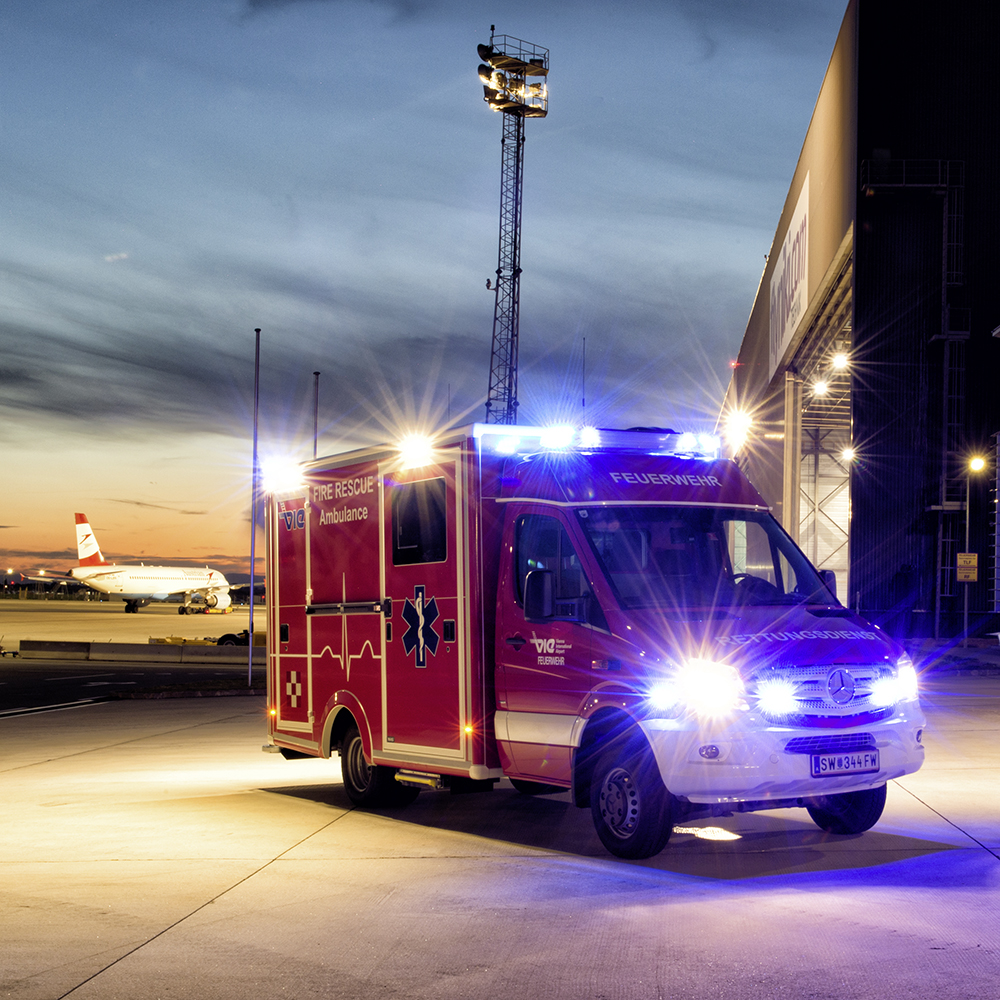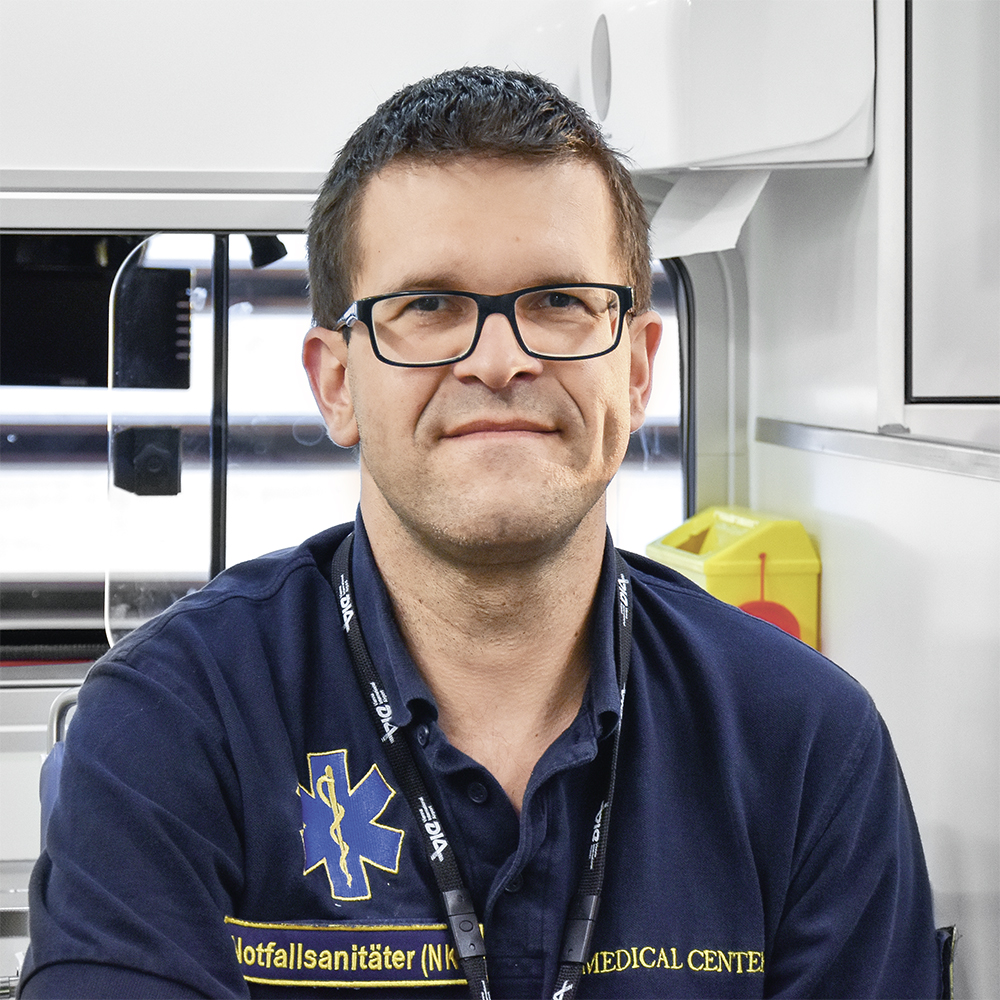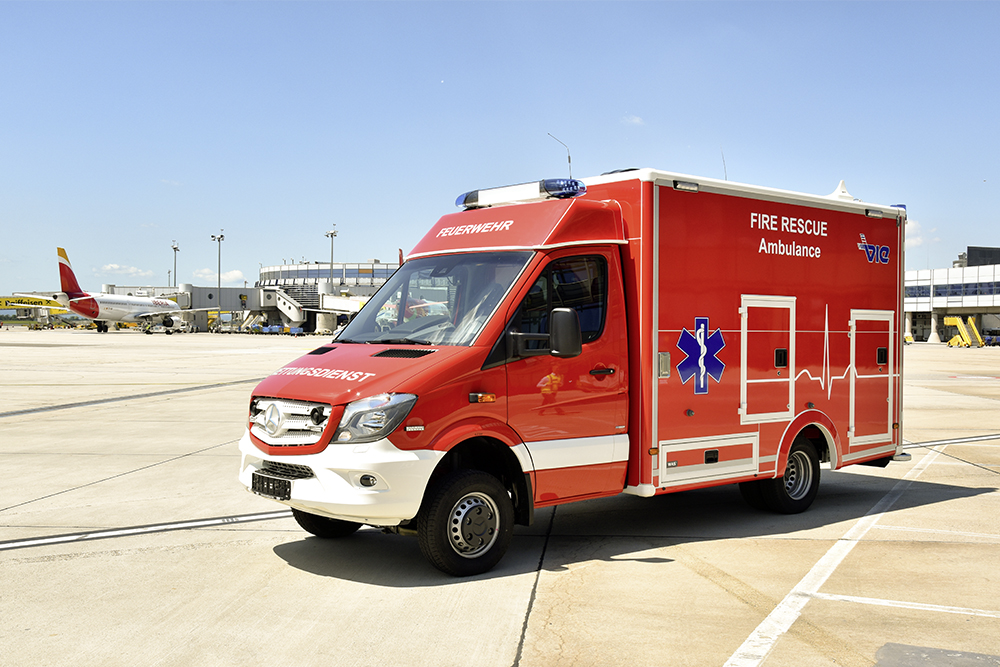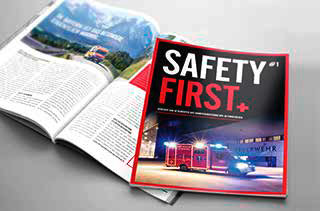

Regardless of where WAS special-purpose vehicles end up stationed worldwide, they all start life in the tranquil town of Wietmarschen, close to the Dutch border. In the autumn weather of northern Germany, it is difficult to imagine that the ambulances which are still covered with frost for the Egyptian Ambulance Organization have to resist sweltering temperatures in their Egyptian locations. In fact, each country presents its own particular challenges. We could fill many pages with our vehicle stories. WAS special-purpose vehicles are also used in South Korea, the Netherlands, Belgium, Luxembourg, the Czech Republic and Switzerland. And each of these has their own story to tell. We recall some of them now on our website.
Let's start with a special-purpose vehicle in Austria, which is not subject to country-specific vehicle regulations but rather its purpose in the country: The ambulance for Vienna International Airport also needs to be locatable from the tower.



Since the start of July 2016, a WAS ambulance has been in use at Vienna International Airport (also known as Vienna-Schwechat Airport). What purpose does an ambulance at Austria’s largest, most popular airport serve in particular?
In principle, an airport is like a city: In 2016, the rescue team was deployed 1,173 times. In addition to travel-related medical advice and transporting non-mobile patients, everyday life includes workplace, leisure and traffic incidents. Even the airport premises resemble the structural conditions of a medium-sized city with a partly public road network, train station, office buildings and shops. An emergency rucksack, defibrillator, oxygen and suction unit are transported to every call-out. Stretchers naturally go without saying since many parts of an airport building can only be accessed on foot. If a patient requires medical assistance while still in the aircraft, there is an extra-narrow carry seat which can fit through the narrow aisles and doors.
A unique feature of the airport ambulances is their special aviation transceiver which ensures secure communication with the tower. It is important to guarantee that ambulances and aircraft do not cross paths if an ambulance needs to access aircraft manoeuvring areas. A transponder on the roof of the ambulance also ensures that it can be identified by the tower with a ground radar. Since the spacious, open area of the concrete airport apron can be subject to extreme weather conditions such as extreme heat and cold or strong wind, a high-performance heating and air conditioning system as well as corresponding temperature isolation in the vehicle case ensures consistent temperatures. 4-wheel drive allows access to grassland and unsurfaced roads in the airport rescue area. Due to compliance with EN 1789 and additional equipment (e.g. aviation radio, transponder for ground radar, F48 carry chair, 4-wheel drive) the model used for standard rescue service is also suitable for comparable airports.

This text was first published in the WAS customer magazine „Safety First“. You can request a free copy of this and many other interesting topics by sending an e-mail to marketing@was-vehicles.com.





